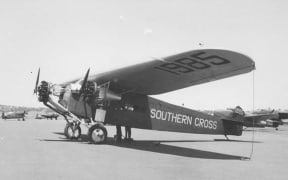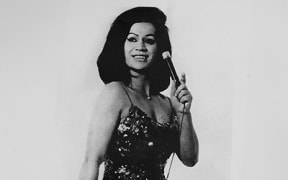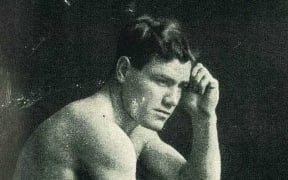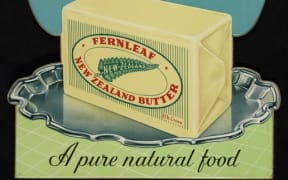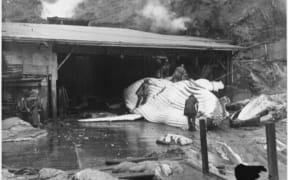For te wiki o te reo Māori, we take a jaunt back through the Ngā Taonga Sound and Vision archives to explore how learning te reo was regarded in the past.
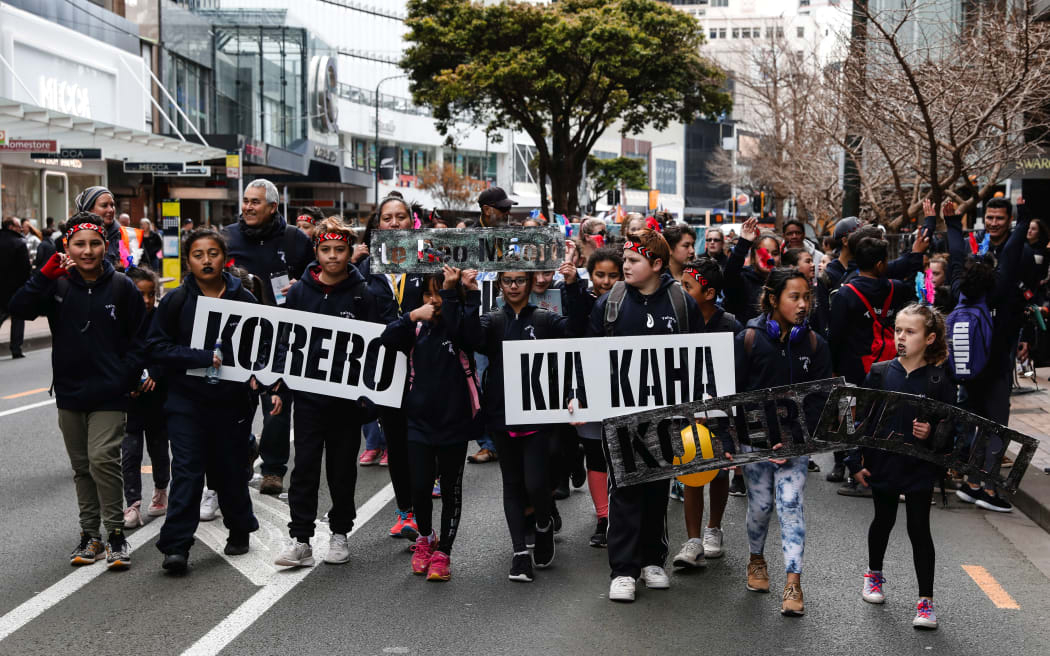
Children marching in te wiki o te reo parade in Wellington this week. Photo: RNZ / Richard Tindiller
Today, there are cheap or free courses at universities and online, podcasts and nifty new apps all aimed at spreading te reo.
However, it's not always been so easy. For many years, young Māori were beaten at school for speaking their own language.
Read more about te reo Māori from RNZ:
- Our 14-part quick-start guide
- Kīwaha, a reo Māori podcast of easy key words and phrases
- News about Māori language week
Sarah Johnston of Ngā Taonga Sound and Vision takes a look back through the archives and explores the limited ways those who wanted to learn te reo could do so, other than from whānau.
First recording - Whakarewarewa school, Rotorua, 1948
We have very few existing recordings of New Zealand children from the 1940s - especially of children just being children, Sarah says.
"If there are any recordings of children in the 1940s, they're being wheeled into a recording studio to sing a little song or something."
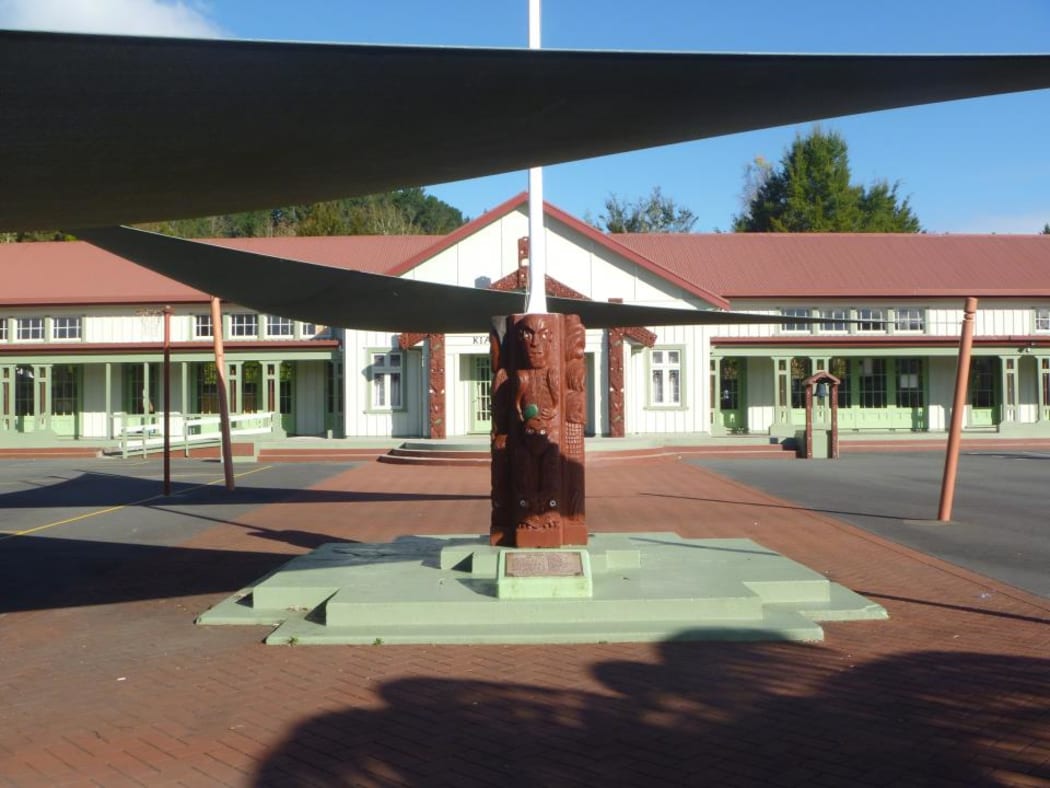
Whakarewarewa school today. Photo: Facebook
However, the first recording - of children at Whakarewarewa school in Rotorua in 1948 - is not of children learning te reo, it's first-language reo-speaking kids learning English.
"I think you can really feel the wairua, the spirit of the children in this.
"By the time those children from 1948 moved on to secondary school, sadly there were very few options for learning te reo."
Teacher: Right we'll go onto the next word, what is it?
Children: 'Feed!'
Teacher: Now tell me about 'feed'?
Child: My mother will 'feed' the baby
Teacher: Right, next word is?
Children: 'Greed!'
Teacher: Now, what does 'greedy' mean?
Child: A boy is 'greedy'
Teacher: Why is a boy 'greedy'?
Child: He doesn't get anyone any kai!
Teacher: Yes, he doesn't get anyone any kai, he doesn't share anything with anyone, does he?
Second recording - Te Reo Māori lessons by radio correspondence, 1956
The Māori boarding schools like Te Aute, Hato Petera and St Joseph's College did teach te reo Māori, but in the state system, the options were very limited until the late 1960s, when te reo became a language subject for School Certificate.
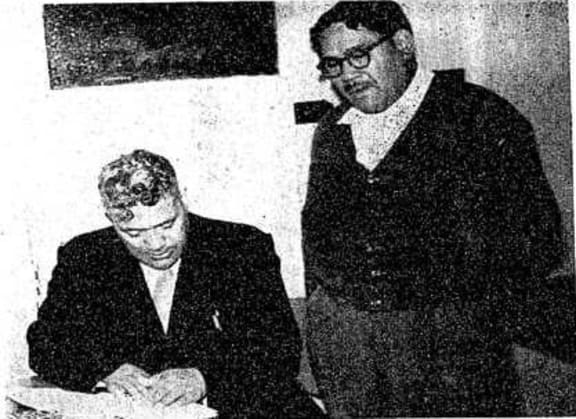
Hironi Wikiriwhi, right, who was a teacher for several years at the correspondence school in Wellington, with Col Arapeta Awatere. Photo: Crown Copyright
"One way that did exist in a limited way early on was via the correspondence school which of course used to broadcast classes via radio," Sarah says.
This second recording is from one of those classes, led by teacher Hironi Wikiriwhi.
"They're great, some of those correspondence book school lessons, they're very much … of the era," Sarah says.
Hironi Wikiriwhi: "Morena ra, morena ra, good morning, Māori pupils.
"1956: it's our first Māori lesson for the year. 1956 in Māori - kotahi mano, e iwa rau, e rima tekau, mā ono.
"Kotahi mano - one thousand; e iwa rau - nine hundred; e rima tekau - fifty; mā ono - and six.
"It's quite simple, isn't it? Now, to all new members, it's your first lesson in pronunciation - but don't be dismayed, Māori is the easiest language to speak, it's purely phonetic.
"It begins with the alphabet. Notice there are 15 letters in the Māori alphabet - now, that's a good start - for, as you know, English has 26 letters - so we find that Māori is much simpler, it is only 15."
Third recording - the NZBC series Māori for Beginners, 1972
- Check out the full LP or read up on the series at Ngā Taonga
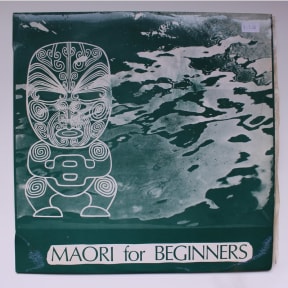
Māori for Beginners LP, NZBC 1972. Photo: Courtesy Alexandra Porter
It wasn't until 1972 that the first Māori Language Day was held - and it was another three years before the first Māori Language Week, Sarah says.
"So, '72 was when the te reo Māori society and Ngā Tamatoa presented their famous petition to Parliament calling for action to preserve the language.
"In 1972 if you wanted to learn the language you couldn't reach for an app or go online - you went out and you bought some vinyl."
This third recording comes from a 1972 series called Māori for Beginners, which was commissioned by the NZ Broadcasting Corporation, which became RNZ.
Māori for Beginners featured well-known te reo speakers and teachers Tamati and Tilly Reedy and kaumatua Matiu Te Hau, and opens with 'The Alphabet Song'.
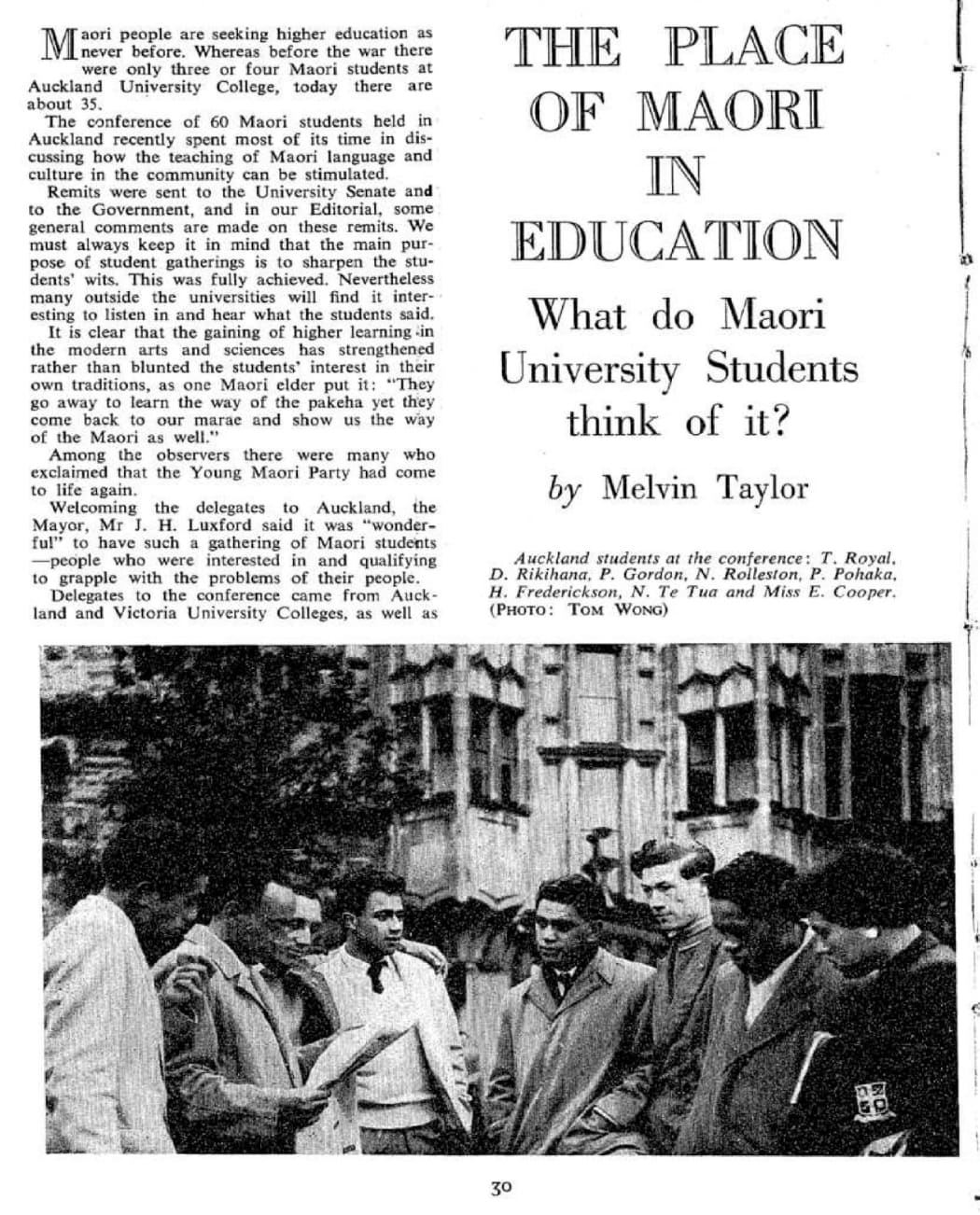
Te Ao Hou magazine, 1 October 1956. Photo: Courtesy, Papers Past
Check out more from Ngā Taonga Sound and Vision:
Ngā Taonga archives: NZ's first international flight
New Zealand had never seen a plane from overseas, so fears were high in 1928 for captain Charles Kingsford-Smith's crew as - just months after a first attempt had vanished - they lost contact in a… Video, Audio, Gallery
Trans-history: Showcasing NZ's transgender heritage
In today's visit to the sound archives of Ngā Taonga Sound & Vision with Sarah Johnston, we will hear sound recordings about how and when transgender lives appeared in the media in the past. Audio, Gallery
Hard Rock from Down Under: NZ's 1928 boxing world title fight
Tom Heeney's attempt to challenge the world heavyweight title - 90 years and three days before Joseph Parker's loss last Sunday - was a national sensation, but Heeney moved to Miami to fish with… Video, Audio, Gallery
Cheesy history of NZ: Aunt Daisy's crackers, Pātea, and Brentry
New Zealand exporters are scrambling to reach new trade agreements with both Britain and the European Union as Brexit looms on the horizon. Britain once bought all the butter, cheese and meat we could… Audio, Gallery
New Zealand's whaling history: Sound archives
For the past week Wellingtonians have been whale-hunting - with their cameras. In the past it would have been a different story, as whales were hunted in Cook Strait right up until 1964. Audio, Gallery
